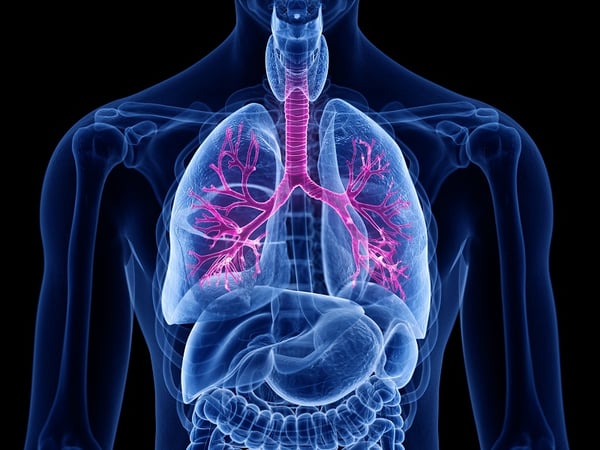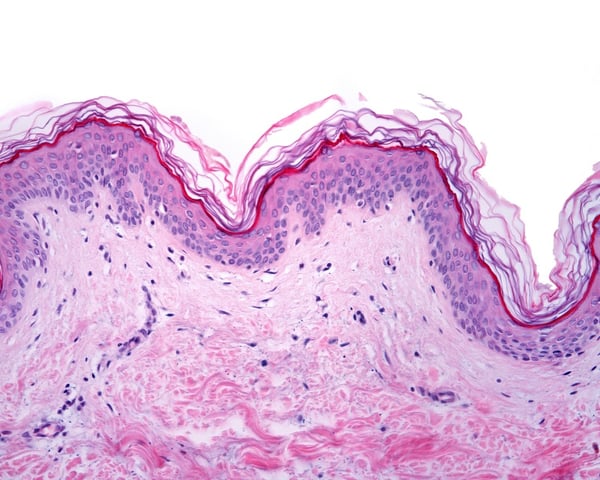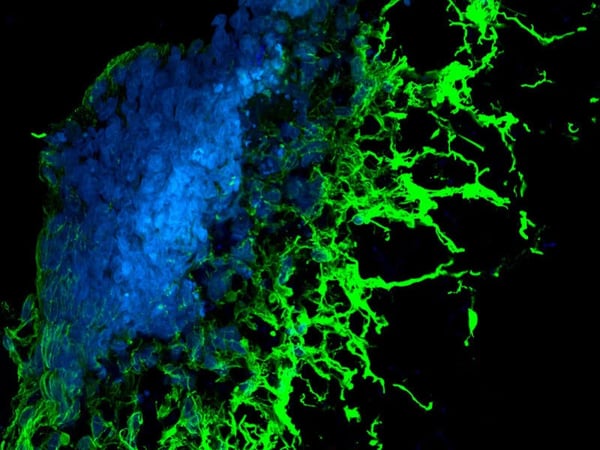Alvetex® Testimonials
Don’t just take our word for it. Read what other your peers are saying about Alvetex 3D cell culture technology.
“I find Alvetex Scaffold convenient to use for studying cell migration in a 3D environment. This motility can easily be monitored using confocal microscopy of live or fixed cells giving me a better resolution than when studying migration of these cells in Matrigel. I would certainly recommend Alvetex Scaffold to other scientists.”
— Dr. Patricia Muller, Beatson Institute for Cancer Research, UK
“We have been using Alvetex Scaffold for growing our prostate and colon epithelial cell lines in a 3D environment and comparing it to traditional 2D cell culture. We have found Alvetex Scaffold very easy to use and like the simplicity and repeatability of the experimental data. We found that preparation of samples for protein expression analysis as well as immunocytochemistry in 3D was simple and comparable to usual protocols. We have observed some striking differences between 2D and 3D prostate and colon cells surface marker expression and plan to use Alvetex Scaffold 3D culture as a complement to our standard 2D culture techniques.”
— Dr. Karel Soucek, Inst. of Biophysics, Czech Republic
“The ability to use Alvetex Scaffold to create a genuine 3D cell culture enabled us to provide a favourable environment in which our cells could grow, differentiate and proliferate. Using Alvetex Scaffold to culture adipose stem cells enabled us to rise above the obstacles typically experienced when performing conventional 2D monolayer culture. The 3D polystyrene scaffolds offer cells a highly porous and uniform architecture to study the growth and differentiation of cells in new and exciting ways. Reinnervate has created a simple product that will further advance long-term 3D cell culture research and will ultimately lead to important new discoveries.”
— Prof. Ramin Beygui, Stanford University, USA
“Oncotest GmbH is a Contract Research Organization (CRO) based in Freiburg, Germany, focused on pre-clinical drug development in cancer therapeutics. We have performed extensive testing of Alvetex Scaffold for 3D tumour modelling. Tumour cell viability assays were very simple to perform and the results exceeded all of our expectations. Oncotest are particularly pleased at the ease of isolation of protein for downstream assays and potential biomarker validation. We are very excited about the forthcoming launch of the Alvetex Scaffold 96 well plate format and plan to incorporate this into our service offering.”
— Sumeer Dhar, Oncotest GmbH
“We have used the Alvetex system as an alternative approach to preclinical models, and are fully satisfied. We like the ease of use of this technology, and its flexibility that supports creative cell cultures such as co-culture. Moreover, Reinnervate technical and scientific support is reactive and eager to assist us in the development and validation of novel in vitro models and settings”
— Dr. Catherine Vaillant, Actelion Pharma, Switzerland
“After evaluating a range of different 3D cell culture systems (scaffolds and bead based systems) we established that the Alvetex Scaffold product was the most suitable for our needs. It was easy to work with, allowed additional biological coatings to be applied and should be straightforward to image cell growth on. Compared to bead based systems, there were lower sheer forces and as a consequence better stem cell viability.”
— Dr. John Gardner, Roslin Cellab, UK
“Kirkstall has been working with many universities, most of whom were using ‘home grown’ scaffolds. However there was always an issue of availability and quality control with such scaffolds. Reinnervate is one of the first companies to provide quality scaffold materials in volume production. We were particularly impressed by the large amount of experimental data that Reinnervate had generated to demonstrate their ability to culture different cell types.”
— Dr. Malcolm Wilkinson, Kirkstall Ltd, UK
“The Alvetex Scaffold technology was a crucial factor in Tecan’s decision to partner with Reinnervate Ltd. We found the evidence of real 3D cell culture, provided in several peer reviewed publications to be very compelling.”
— Dr. Kevin Moore, Tecan GmbH, Switzerland
“Reinnervate’s [now part of REPROCELL’s] expertise in 3D culture plates was backed by early results that show upcyte® hepatocytes, grown with a more native 3D morphology, in Alvetex Scaffold, seem to outperform their 2D counterparts.”
— Dr. Joris Braspenning, Medicyte GmbH, Germany
“The importance of 3D cell culture is presently transforming how scientists conduct their studies. The timely development of Alvetex Scaffold makes such work easy to undertake in the laboratory, but more scientifically relevant too. Our experience to date has been very positive.”
— Prof. John Haycock, University of Sheffield, UK
“Alvetex Scaffold enhances the feasibility of creating 3D full thickness skin equivalent models with improved life span enabling us to advance our research to study more closely skin carcinoma invasion and early metastasis in a more relevant environment.”
— Dr. Penny Lovat, Newcastle University, UK
“Liver toxicity models need to be representative of the in vivo environment and applicable to high-throughput experimentation. Alvetex Scaffold helps to deliver on both of these accounts. I find that hepatocytes cultured on Alvetex Scaffold display a more realistic morphology, gene expression and function compared to 2D hepatocytes. I also find that Alvetex Scaffold supports analytical methods important for drug toxicity screening.”
— Adam Hayward, PhD student, University of Durham, UK
“We have been using the Alvetex Scaffold for growing or primary and metastatic melanoma cells in a 3D environment. I have found it extremely easy to use and certainly comparable to the ease of culturing cells in 2D. The preparation of protein extracts and immunocytochemical staining of cells grown within the Alvetex scaffold is very straightforward. This ease of use as well as the ability to use the Alvetex scaffold to culture cells in 3D for extended periods of time, has made Alvetex a regular addition to our set of research tools.”
— Dr. James Allen, University of Exeter, UK
“We use Alvetex for 3D imaging of neurospheres. We are now able to view 3D structure and able to localize the Spheres. We are also monitoring how cells migrate out of the spheres as Alvetex Scaffold allows for directional analysis of these migrations. 3D cell images are easily obtained with contrasting rapid stains and confocal imaging via z sectioning.”
— Carol Tucker-Burden, Emory University, USA
“When cultured in Alvetex, my cells proliferated more evenly creating larger continuous domains compared to hydrogel type scaffolds. Normally hNSC cells form neuronal “bodies” without attachment. In hydrogels these bodies tends to be limited by size because of the hypoxia created by poor material transport of materials to the centre. The Alvetex Scaffold helps to overcome of this problem.”
— Nandor A. Garamszegi, NAG Biosystems, USA
“We had more vigorous growth on the Alvetex Scaffold than in 2D. Moreover the cells tended to form more “anatomical structures” than in traditional 2D cultures. A biologically friendly scaffold where the background fluorescence of the scaffold makes it easy to use for confocal microscopy.”
— Monica Neagu, National Institute for Pathology, Romania
“We set out to compare the ECM gene expression of human NP cells grown on 3D Alvetex Scaffold, monolayer and alginate beads. We found that our NP cells, when grown on Alvetex 3D scaffold showed upregulation of Aggrecan compared to cells grown as monolayer. We can conclude that on the alvetex scaffold the NP cells can restore their phenotype.”
— Dessislava Markova, Jefferson University, USA
“Alvetex Scaffold is an example of innovation to move us closer to better models for mimicking in vivo behaviour of cells with the control offered by in vitro conditions.
— Neil Kelleher (award judge of The Scientist magazine Top Ten Life Science Innovations), Northwestern University Chicago, USA
“Alvetex Scaffold should enable the routine and reproducible creation of 3D cell cultures in the laboratory and extend the concept of 3D culture beyond simple, reconstituted extracellular matrices to complex cellular structures.”
— H. Steven Wiley (award judge of The Scientist magazine Top Ten Life Science Innovations), Environmental Molecular Sciences Laboratory, Richland WA, USA



